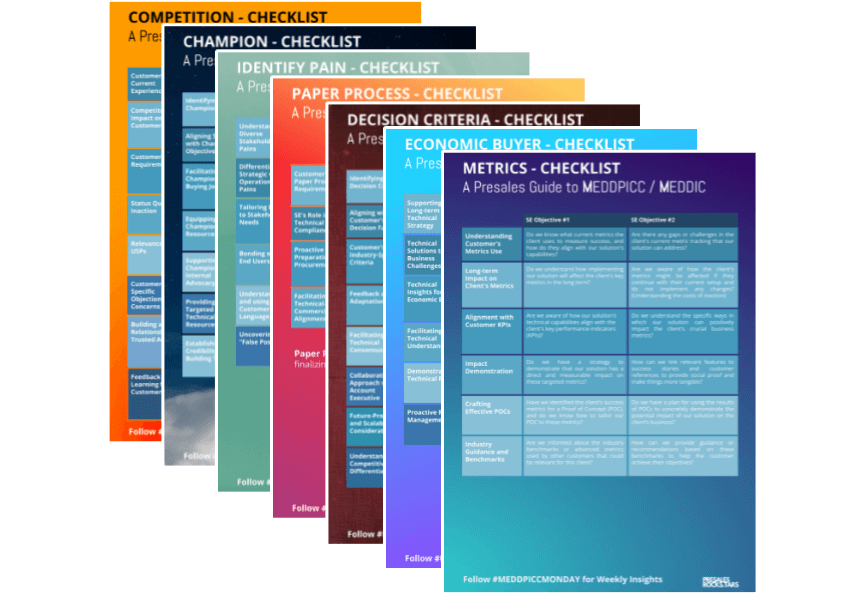Feel – Felt – Found – The best way to handle objections during your software demonstration
In this article, I would like to share with you my favourite technique to handle objections and shift your mindset towards acknowledging them as a positive buying signal rather than a threat during your software demo.
To be fair with you, it took me quite a while to understand that you don’t have to be afraid of objections! I was mostly worried about looking like a fool, not knowing the correct answer.
Embrace every Objection
But let me tell you one thing: objections are actually a positive buying signal because they tell us that your client is actively processing the information you have shared, rather than listening to you apathetically.
Just ask yourself what kind of client you are more likely to close:
- The one that is leaning back during your presentation, not engaging at all?
- Or the one that is highly involved, asking you tough questions.
The first one might be easier to demo to because you can do your thing.
But in all honestly, everything you say goes in one ear and out the other.
Whereas the „tough“ guy is actively processing the information you are sharing, trying to understand how this applies to their job.
Selling new software is a change process. You have to convince people to stop doing what they are doing. And what they have been doing for the past decade.
But selling change is difficult and requires you to trigger a thought process and fight through some resistance first.
So, only if your client is actively engaged in your presentation, trying to weigh the pros and cons of your tool, they are eventually opening up for change.
Whereas the easy-going guy is thinking about his favourite super ninja turtle but not about changing his behaviour.
This is the counterintuitive thing about software demos – the ones that feel great are not necessarily the ones you are going to close. The tough ones are your opportunity to shine and gain your client’s trust and attention.
And even if you don’t know the correct answer to an objection – be honest and make sure to follow up with an adequate response! I’ve never been blamed for not knowing an answer; but I’ve actually been blamed for being a know-it-all.
Embrace every objection – they are positive buying signals and one of the best cues that your client is open for change.
Feel – Felt – Found
But lets finally get to the practical part of this article and share with you my favourite objection handling technique.
It is a modification of the „Feel-Felt-Found“ approach that has been introduced back in the 60ties.
Many of you might say that’s old had and has already been outdated 20 years ago. And I partially agree with you, there are downsides.
But in my experience, the Feel Felt Found approach has mostly being used as a closing technique in direct to consumer transactions rather than enterprise software sales. For example when buying a house or a car.
You probably know the most common objections in those scenarios: You either need some more time to talk to your spouse before making that decision or double-check the financials.
And that’s when the sneaky sales guy would use the feel felt found-technique to tell you that he can fully understand that this is an important decision. And that other clients had the exact same feeling. But today, they don’t regret their purchase and lived happily ever after.
This is not how I recommend using the triple F technique. We are not (yet) trying to close our client.
But feel-felt-found works nicely on many levels if you apply it correctly and has become one of my favourite tools.
And it is super easy to apply during your software demo:
First, you signal to your client that you understand how they feel. You feel with them. This builds empathy and rapport and shows to your client that you are listening to them and that you acknowledge their objection.
Secondly, you tell your client that they are not alone. That you know other clients who felt the same way. You are letting them know that this initial thought is common. This part of the technique is all about establishing social proof.
And last but not least, you tell them about how your reference client had found a solution to overcome that exact challenge.
This is the basic triad of feel felt found. And it works especially well because you don’t just build empathy, you also create the opportunity to tell a story, back it up with facts and customer references and also leverage the power of social proof.
Lets quickly summarize the three core aspects here:
- You acknowledge their thought by feeling with them
- You establish social proof by telling your client that they are not alone with this issue
- and ultimately, you present a solution by telling a customer success story
But we need to add some little details to make this technique more useful for handling objections during demos.
As a rule of thumb, we have to make sure that we fully understand the intention behind our client’s objection. Often, their first objection is just a smokescreen as our dear clients are hiding the real reason for their question.
So it is your responsibility to further explore the underlying concern by asking a clarification question like „Could you please elaborate this a bit further, to make sure I fully understand your question?“ Or by simply rephrasing the objection.
Isolating objections is a whole different topic for another episode. But you need to be aware that smokescreens are very common, so be prepared for a second objection right after answering the first one.
I already mentioned that this technique has been used for decades, and therefore can easily be recognized by experienced buyers.
And because it is also easy to apply, I would recommend not to use the terms feel, fell & found and use other phrases instead.
And please don’t overdo it – you cannot respond to every objection with the same formula! After the second time at the latest, your client will feel like they are talking to a monkey.
Be genuine!
Before coming to the end of this article, I would like to make one last point – I want you to provide a genuine response!
I want you to use relevant and actual references stories when presenting your solution. Don’t make things up. Ideally, you have a reference client that is willing to support your case if the objection is a real one.
But if you are telling a fairytale and cannot back it up, their bullshit detector will pick-up on that 9 out of 10 times and you are wasting a great opportunity to bond with your client and establish yourself as their advocate,
To summarize: objections are good, you don’t have to be afraid of them. They are positive buying signals. And you got to take them as your opportunity to empathise with your client, leverage social proof and introduce a success story to back it up.
Every objection is your best chance to overcome your client’s resistance and to trigger a change process that will ultimately result in a new customer!





